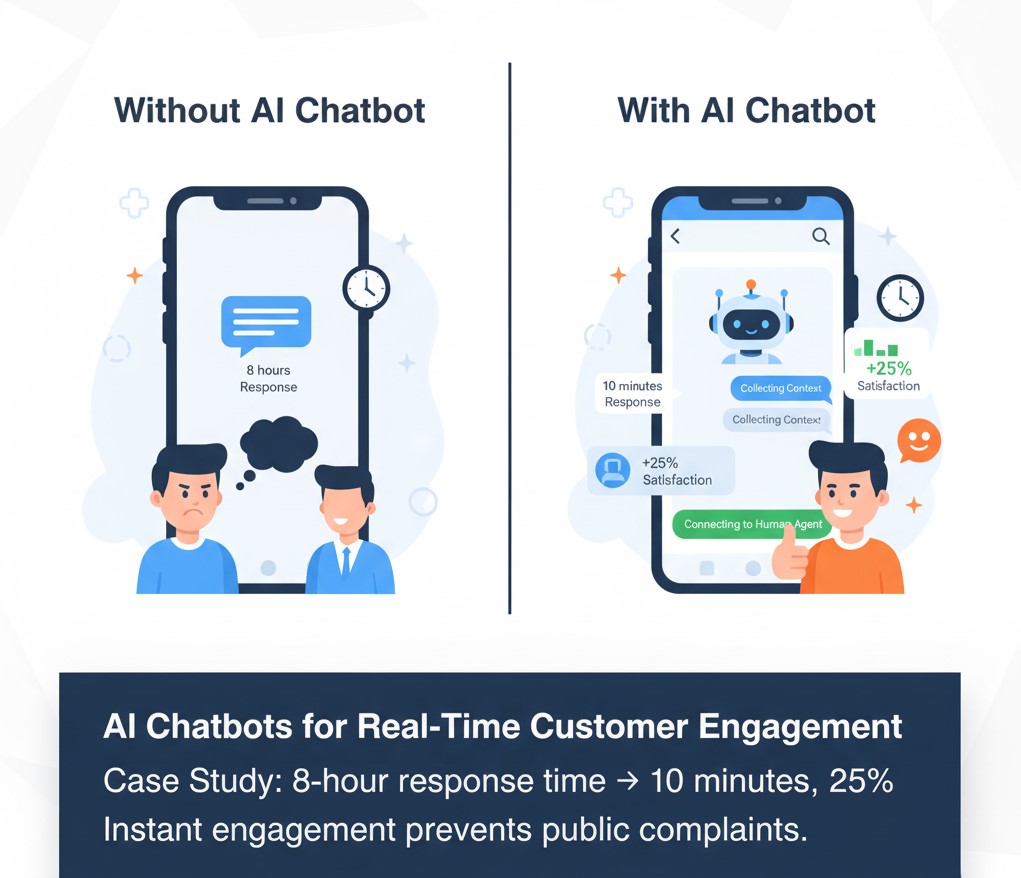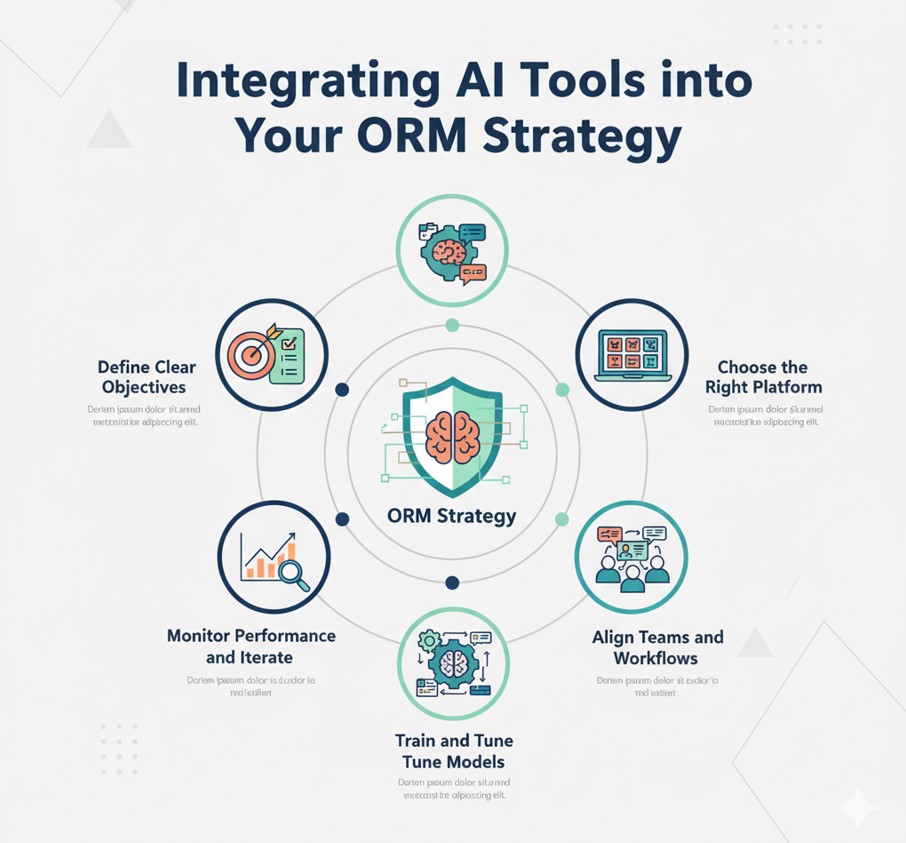In today’s digital world, brand reputation changes by the second. One negative tweet or scathing review can spread like wildfire if you’re not vigilant. Traditional monitoring—checking review sites and social media feeds manually—can’t keep pace. That’s where artificial intelligence (AI) and machine learning step in. By automating sentiment analysis, real-time engagement, and issue triage, AI-driven tools empower businesses to detect threats faster, respond proactively, and maintain customer trust around the clock. In this guide, we’ll explore how to integrate AI chatbots and machine learning into your online reputation management (ORM) strategy to protect and grow your brand in 2024 and beyond.
Why AI Matters in Online Reputation Management
Online reputation management is no longer a reactive exercise. Customers expect instant acknowledgement of complaints, and potential buyers investigate brands deeply before making a decision. AI brings two game-changing capabilities:
- Speed: Machine learning algorithms can scan millions of social posts, reviews, forum comments, and news articles within seconds, flagging mentions that require your attention.
- Accuracy: Sentiment analysis models classify text as positive, negative, or neutral with over 90% accuracy. They detect emerging trends, spikes in negative sentiment, and potential PR crises before human teams do.
By embedding AI at the core of your ORM efforts, you transform from a firefighting mode to a proactive, data-driven strategy that keeps your brand one step ahead of risks.
AI Chatbots for Real-Time Customer Engagement

Chatbots powered by natural language processing (NLP) are no longer limited to answering FAQs. In the context of ORM, they can:
- Acknowledge Complaints Instantly: When a user posts a negative review or tweet, an AI chatbot can send an immediate response acknowledging the issue and setting expectations for resolution.
- Gather Context: Through conversational flows, chatbots collect relevant details—order numbers, service dates, or account IDs—so human agents can resolve issues more efficiently.
- Escalate Smartly: A well-trained chatbot routes high-severity cases (legal claims, safety concerns) to specialized teams, while handling low-severity inquiries autonomously.
Case Study: A mid-sized e-commerce retailer implemented an AI chatbot on its Facebook and Instagram pages. Within three months, average response time dropped from 8 hours to under 10 minutes, and customer satisfaction rose by 25%. That instant engagement prevented dozens of complaints from escalating publicly.
Machine Learning for Sentiment Analysis and Monitoring
Sentiment analysis is the backbone of AI-driven ORM. Here’s how machine learning enhances your monitoring:
- Multichannel Listening: ML models ingest data from review sites (Google, Yelp), social platforms (Twitter, TikTok), forums (Reddit), and blogs, normalizing disparate formats into a unified feed.
- Contextual Understanding: Modern transformers (like BERT, GPT) capture nuance—sarcasm, domain-specific jargon, or mixed sentiment—ensuring fewer false positives and negatives.
- Trend Detection: Unsupervised learning algorithms identify sudden shifts in topic frequency or sentiment distribution, alerting teams to brewing crises or viral praise campaigns.
- Competitive Benchmarking: ML can compare your brand’s sentiment scores against top competitors, highlighting areas where you lead or lag in customer perception.
By leveraging machine learning, you gain a 360-degree view of your brand’s health, enabling not just faster responses but smarter, data-backed decision-making.
Integrating AI Tools into Your ORM Strategy

Adopting AI requires more than installing a chatbot plugin. Follow these steps to ensure seamless integration:
1. Define Clear Objectives
Are you aiming to reduce average response times, improve sentiment scores, or detect crises earlier? Set SMART goals (Specific, Measurable, Achievable, Relevant, Time-bound) to guide tool selection and evaluation.
2. Choose the Right Platform
Evaluate AI vendors based on: data sources supported, language coverage, sentiment accuracy benchmarks, ease of integration with CRM or ticketing systems, and scalability.
3. Train and Tune Models
Although many solutions offer pre-trained sentiment models, custom training on your industry-specific text improves precision. Supply past customer feedback, reviews, and transcripts to fine-tune the algorithms.
4. Align Teams and Workflows
Ensure marketing, customer support, and PR teams have access to the same dashboards and alerting rules. Develop escalation protocols so AI-flagged issues reach the right stakeholders automatically.
5. Monitor Performance and Iterate
Use key metrics—response time, resolution rate, sentiment score trends—to assess impact. Regularly review false positives/negatives and retrain models as your product or service evolves.
Best Practices and Common Pitfalls
While AI offers powerful advantages, avoid these mistakes:
- Over-automation: Relying solely on bots can frustrate users. Always offer an easy path to human assistance.
- Ignoring Ethics: Ensure chatbots disclose that they’re automated, maintain privacy standards, and avoid manipulative upselling tactics.
- Data Silos: Don’t let AI work in isolation. Integrate outputs with your CRM, analytics, and knowledge base for a unified view.
- Neglecting Continuous Training: Language evolves. Periodically update your training data to capture new slang, product names, and customer concerns.
Embrace a balanced approach: let AI handle volume and routine tasks, while human experts focus on complex or high-impact interactions.
Future Trends in AI-Driven ORM
As AI technologies advance, ORM is set to become even more proactive and personalized. Watch for:
- Voice and Video Analysis: Automated analysis of podcast mentions, YouTube comments, and live streams to capture brand perception beyond text.
- Generative AI Responses: GPT-style models drafting empathetic, context-aware replies that feel more human while saving time.
- Predictive Reputation Scoring: Forecasting sentiment shifts based on external factors—seasonality, competitor moves, or news cycles—so you can preemptively adjust your strategy.
- Cross-Language Monitoring: Real-time translation and sentiment detection across dozens of languages, essential for global brands.
Staying abreast of these innovations will ensure your ORM program remains cutting-edge and resilient against emerging threats.
Conclusion
AI chatbots and machine learning are no longer optional add-ons; they’re essential components of any modern online reputation management strategy. By automating listening, sentiment analysis, and early engagement, you’ll resolve issues faster, boost customer satisfaction, and defend your brand against crises. Start small—pilot an AI chatbot on your busiest channel—then scale up to full multichannel monitoring and predictive analytics. With the right tools and processes, you’ll transform reputation management from a reactive chore into a strategic growth driver.
Learn more about: Using AI-Powered Sentiment Analysis for Proactive Online Reputation Management





